On a six-month sabbatical from a bus driver’s life in aggressive, intolerant and impatient Oldham (his words), Lewis (not his real name) had taken up the reins of the day tour driver/guide, and when he explained he would not be talking to us while driving the group murmur was favourable and understanding.
Off we whizzed from Somerled Square and it soon became clear, once we launched onto the single-track roads with passing places, Lewis was king of the road. If visiting drivers were struggling with the demands of the terrain, Lewis was right on their tail, pushing, harassing and sounding his horn to get them out of his way, overtaking frequently and once on a blind bend. He knew no sane speeding-up or gentle slowing-down, just fast and stopped were sufficient.
“I think he’s in Formula One mindset,” I said to Rob, and by hilarious coincidence, that is exactly how a fellow passenger from Wellington, New Zealand, described his driving when we were chatting in the pub afterwards, recovering over a pint and plate of vegan haggis, neaps and tatties, bathing in whisky sauce.
Rob felt he was overflowing with nervous energy; he certainly wanted us to enjoy the day he designed for us. He wanted our responses and when he started getting a dialogue going then he seemed to calm down in himself, although not in his driving, sadly. Chatting together as a threesome he came across as genuinely interested in us and the history of Skye, in particular the places he showed us.
The main reason we booked the tour, was to visit the Fairy Pools; where the River Brittle runs down from the Cuillin Mountain Range (one of the many dormant volcanoes) over colourful rocks and hollows creating blue/green pools of crystal water, mini waterfalls and reflecting the sun’s rays in slithers of silver leaf. A meandering path of grit has been laid, taking visitors as far up the glen as they wish, to take in the aura and atmosphere of the place.
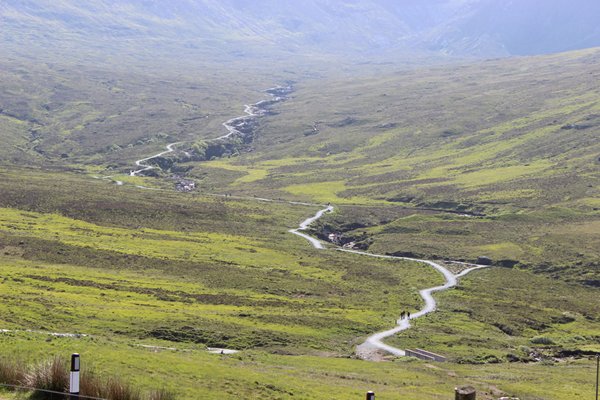
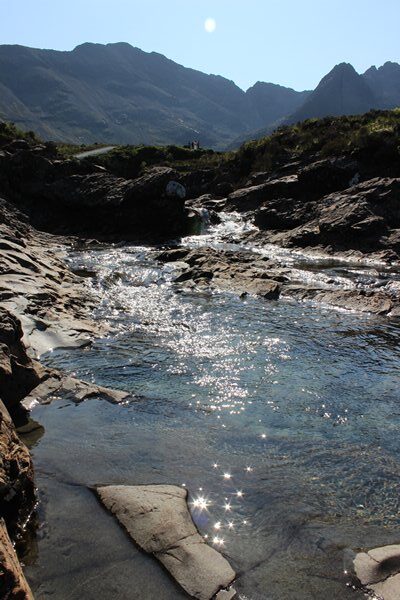
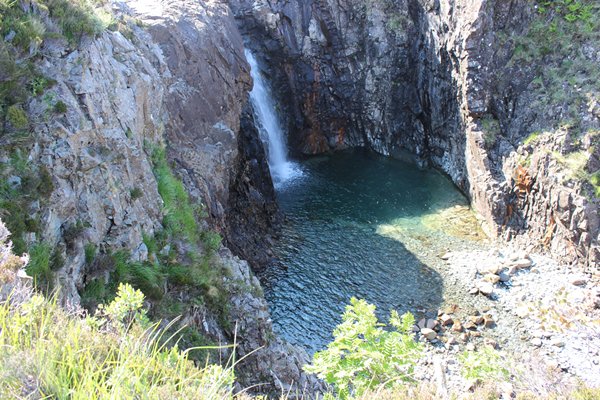
A final battle between clans MacLeod and MacDonald took place here, in a hollow one evening in 1601, and before and since then small farmers had populated the valley, living in stone built ‘black houses’, so called because burning peat on the centre of the floor without a chimney meant the smoke kept the midges at bay and darkened the skin and no doubt the lungs of the dwellers. They were ‘cleared’ off their land by the lords in favour of sheep, but numerous walls remain to keep the memory of them alive.

The name ‘fairy’ doesn’t refer to any past aspect of Gaelic culture. Lewis said it refers to the dragon flies that love to fly over the water in the summer. I like that version.
The location is down a long track; hence it is not on any bus route, which is why we opted for a tour, to get there, as better value for money than a taxi ride.
After our first few miles as ‘crew’ aboard Lewis’ ‘racing machine’ a double snifter of single malt at the Talisker Distillery was very welcome I can tell you.
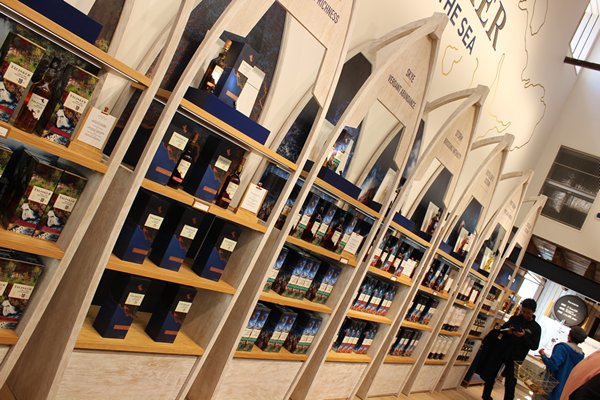
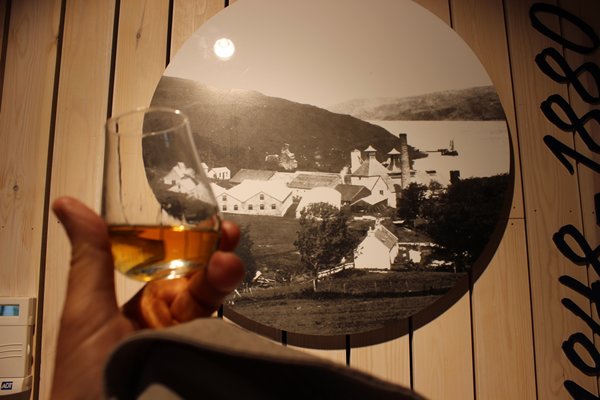
Lewis had mentioned at the start that Dunvegan Castle would not take long if we chose to go there, as there are just four or so rooms open to the public. Usually, his passengers can choose to go either to Dunvegan, which we planned to visit another day by bus anyway, or on to the Neist Point Lighthouse; an alternative he suggested was much more worth a visit. So, we were all happy to stop just for a quick coffee at the castle after a fabulous hour sitting on soft grass overlooking the beautiful, automated lighthouse designed by Robert Louis Stevenson’s first cousin, David, while munching our picnic lunch and soaking up the sun.
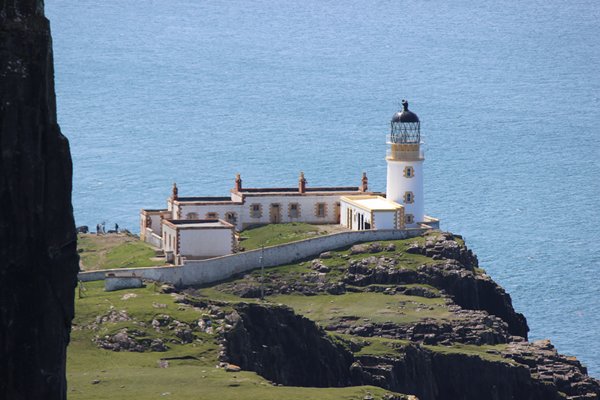
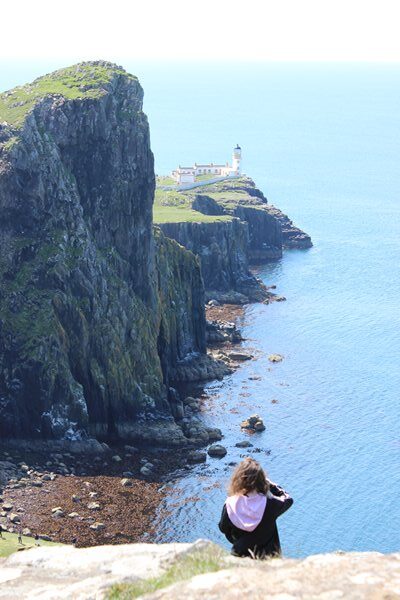
The area was beginning to remind me more and more of our home area of Dorset and for me the Isle of Wight, with its Jurassic era and evidence of dinosaurs. Lewis took us to a coastal area where he knew the footprints of these ancient creatures could be seen in the horizontal strata off the shore, but sadly the tide was in, so we moved swiftly onwards. Another nice idea which we appreciated.
The Quiraing is a vast lookout area high up on the Trotternish range of peaks near the little coastal village of Flodigarry; where Flora Macdonald settled with her recently wed husband, four years after she rowed Bonnie Prince Charlie across to the isle from Benbecula on 29 June 1746 following his defeat at Culloden two months before.
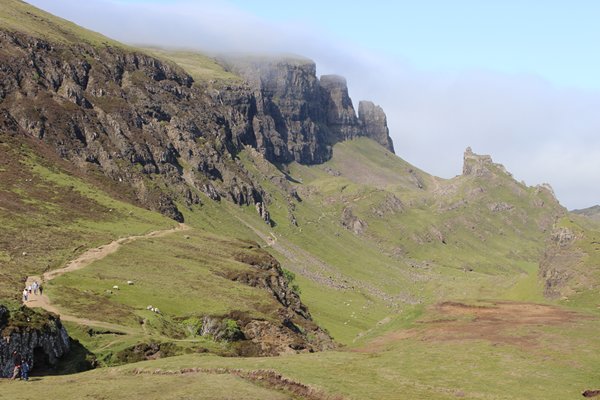
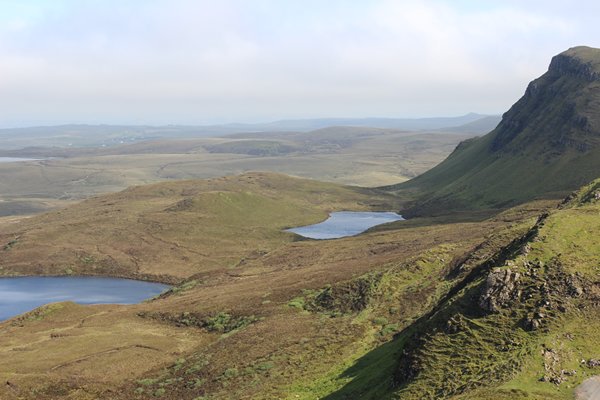
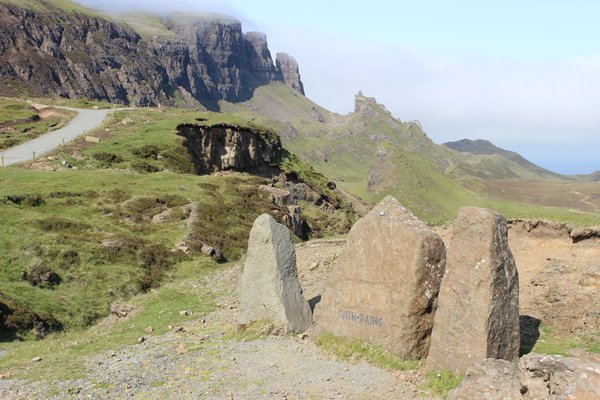
The weather was perfect for seeing as far as the Outer Hebrides, until a pure white train of fog covered the entire length in the afternoon; and for Lewis’ explanation of the fate of a less fortunate bride. At our final pit stop Lewis helped us to see the Old Man of Storr, in repose on his back, forlornly awaiting the return of his wife, who had awoken and fallen head first into the Sound of Raasay, never to be seen again.
So all in all we had a great day, thanks in part to Captain Lewis, the rewarding company of our multi-national fellow travellers and not least the spectacular island that is Skye.